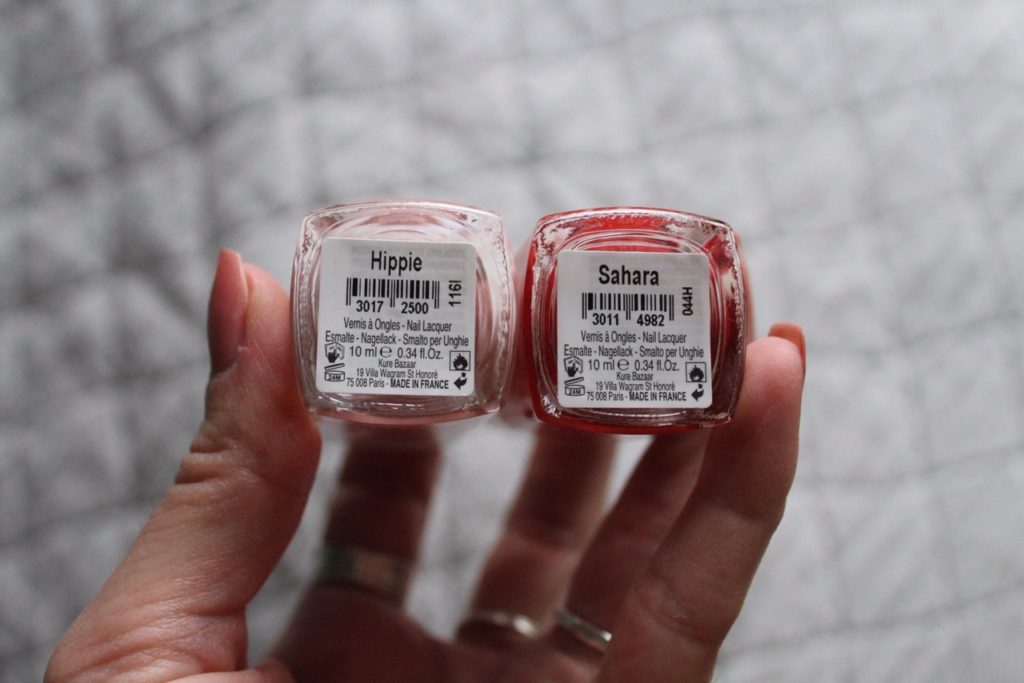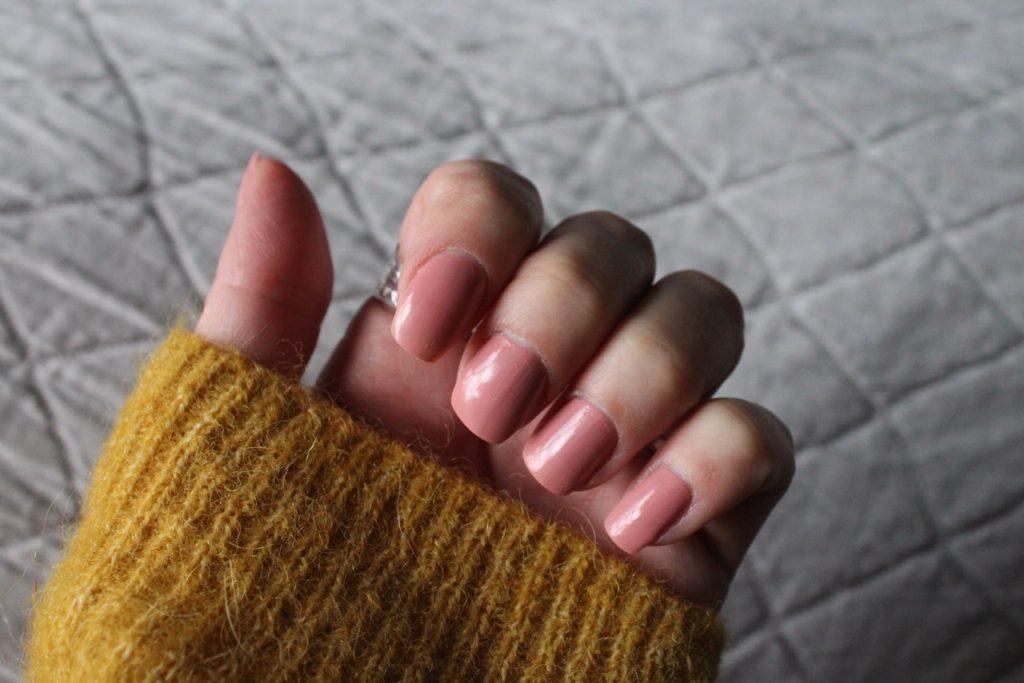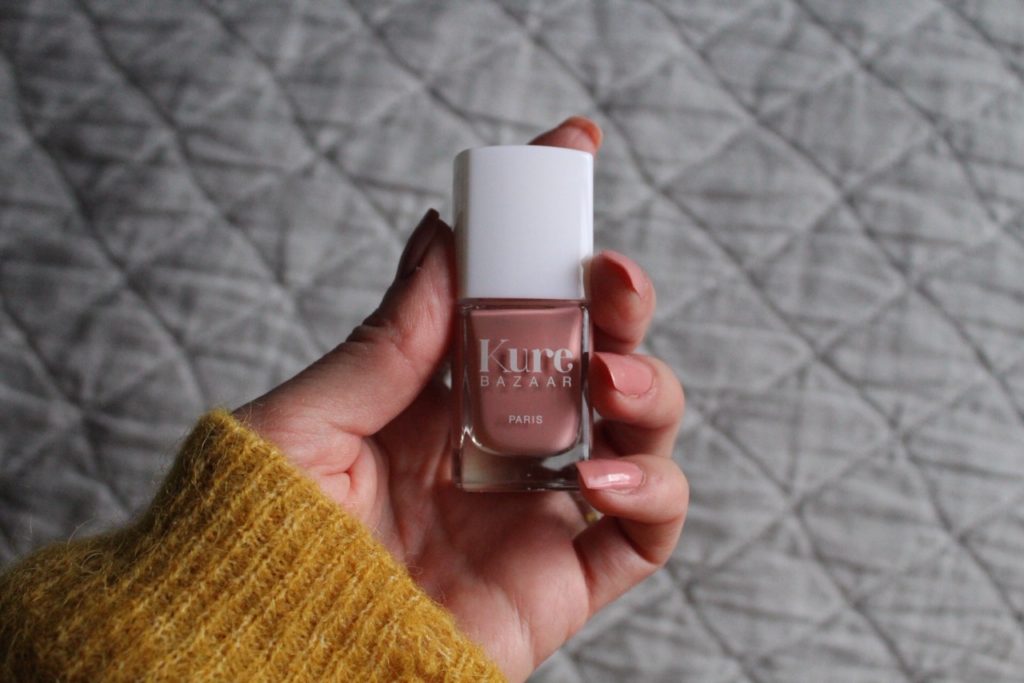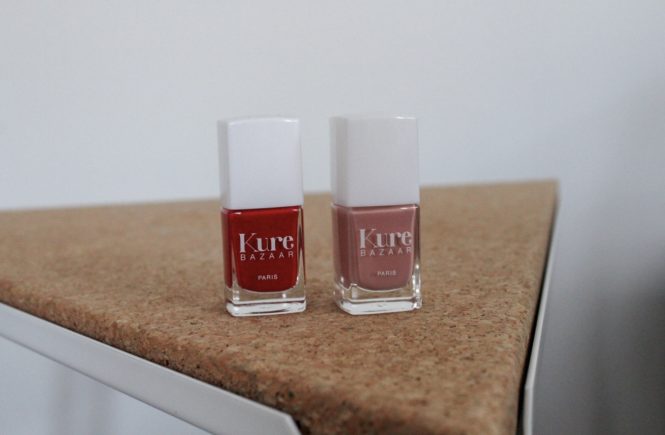A beautiful accessory to add a bit of colour and fun to a look or your mood. But often a terrible, toxic enemy of the environment. I’ve explored everything you need to know about nail polish, what to look for from a conscious perspective and how to make it last.
Many of us probably have too many. This is of course relative and depends on how much we use nail polish but to have several shades of all sorts of colours is usually not necessary. Especially as most of us probably use a few favourites and the rest dries up.
I’ve had loads for many years but I haven’t bought any new ones in ages, which made me realise all of the ones I had were really old and some had already dried up. Most of them are good for about one or two years but you can normally check the number on the back to see how many months they last.

As most of them had gone pretty bad, and to start fresh, I decided to get rid of all my nail polishes a while back. This isn’t completely problem-free to do because the toxic nail polishes need to go to a hazardous waste facility for safe disposal. Best thing to do is to search online for a waste facility in your local area that will accept nail polish. When I did a search I realised that beauty retail chain KICKS has a collaboration with the Stockholm municipality where they collect nail polish so I was able to hand mine in at the closest store. Might be worth looking for something similar in your city or local area, and if it doesn’t exist, then suggest it to your local council! (If you’ve got tips on nail polish disposal then do let me know and I’ll share it.)
What nail polish to use?
Navigating products filled with chemicals is usually not the easiest and nail polish is known for being the most toxic of all beauty products. In general, they’re better than they were but there are still quite a lot of chemicals used for that long-lasting shine.
The three most commonly used toxins are toluene (known to cause headaches, dizziness, and reproductive damage), formaldehyde (with restrictions around skin contact and inhalation) and phtalates like DBP (known to cause hormonal damage to male fetuses and is banned in Europe). To steer clear of these look for the 3-free labelling. To avoid other toxins such as camphor and xylene, nail polish brands are developing 5-free, 7-free, 9-free, and 10-free polishes. The ones that have managed 10-free have removed additional toxins as well as parabens and acetone, and they’re most likely free from animal byproducts which make them vegan but look for specific labelling if this is a deal-breaker for you. There are also some, such as Little Ondine, that are water-based.

Depending on what products you’re looking for, and what you’re trying to avoid it’s always good to check labels and buy nail polish from a retailer who can answer any questions you have. Ideally buy from one you know sells good products, to avoid any that are just greenwashing. In the UK, I prefer Content Beauty & Wellbeing, and here in Sweden, I’ve bought most of my conscious beauty from Naturligt Snygg.
My recent purchases
Finding a couple of key / favourite colours and sticking to them, rather than buying all the shades, is one of the most sustainable things you can do when it comes to nail polish. Maybe a darker one for winter and a lighter one for summer can be enough?

I went for a terracotta red and a dusty pink from Kure Bazaar that creates 10-free nail polishes with a formula of mainly natural origin based on cotton, wood pulp, corn, wheat and potatoes.
Making your nail polish last
When it comes to looking after nail polish there are various myths going ’round such as the one about storing it in a refrigerator (which isn’t a good idea), but I’ve listed the tips I’ve found below:
- An even room temperature is best, so not in the fridge, and ideally not in the bathroom because of the changes in temperature. In a box under the bed or in a wardrobe is a better option.
- Keep it stored upright, to avoid the polish leaking up along the brush where it may get sticky or caught on the bottle edges where it might dry easily.
- Don’t shake the bottle (same reason as above), instead, roll it between your hands before opening.

